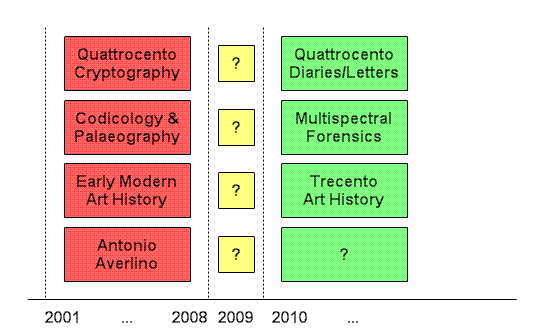Apart from Cipher Mysteries, the Voynich blogosphere has been far too quiet of late. Even Elias Schwerdtfeger’s “Das Voynich Blog” is, despite some intriguing posts in the past, fairly subdued.
And so it is a breath of fresh air to see a new blog from an old friend: long-time Voynich mailing list member Elmar Vogt has recently started up his Voynich Thoughts blog. Elmar has already posted a whole heap of nice snippets, such as the German Wikipedia entry’s comparison of the plant on f56r with drosera intermedia (which I mentioned here and here), a nice comparison of the Sagittarius archer with a drawing in a 15th century woodcut, as well as a circa-1450 head-dress comparison with a zodiac nymph.
Part of me really wants him to put these fragments into context – for the Sagittarius page, for example, how it was suggested long ago that the zodiac motifs might well have largely been copied from a (probably 14th century?) German woodcut calendar; a discussion of the Sagittarius archer’s (probably 14th century and fairly rustic) crossbow; plus a wider comparison of the crossbowman’s headwear with (say) the 15th century “turban” / chaperon as depicted by Robert Campin and Van Eyck.
Yet another part of me simply wants Elmar to fill his blog with that thing he does so very well – which is to use his keen logical eye and pleasantly acid German wit to be entertainingly tart about Voynichological nonsense. Wherever contemporary haruspicators pop up to read their imagined stories into the VMs’ well-scanned entrails, I’ll always be delighted to read Elmar’s commentary.
Trivia time: it’s no great secret that software developer Elmar has long contributed text edits to Wikipedia (such as its VMs page) under the monicker “Syzygy“: but what is perhaps less known is that, as a fan of the Atari ST, he chose this as a homage to the company Atari – Nolan Bushnell and Ted Dabney used “Syzygy Engineering” for their original company name.
Hmmm… I’m not sure he’d be much impressed by the two computer games I wrote for the ST: 3D Pool and Loopz. Oh well! 🙂
